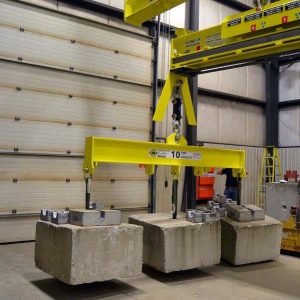 Why load testing is important for safety, according to ELS
Why load testing is important for safety, according to ELS
January 7, 2019 REDWIRE is news you can use from leading suppliers. Powered by FRASERS.
Posted by Engineered Lifting Systems & Equipment Inc.
With over 40 years of experience, Engineered Lifting Systems & Equipment Inc. provides standard & custom overhea... Read more
Subscribe
Free REDWIRE e-newsletter

Load testing is a necessary means of verifying the mechanical and structural integrity of a lifting device.
The team at Engineered Lifting Systems & Equipment (ELS) is more than just people who provide great products. They also offer expertise to help customers find the right solutions and get the most out of them. The company’s website offers a library of informative literature and videos on their products and how to use them correctly – including a guide to load testing.
What is a load test?
According to ELS, a load test is a physical-proof test of a lifting device. A qualified person, typically a professional engineer, subjects the equipment to a load of up to 125 percent of its rated capacity to check its structural and mechanical integrity. During and after releasing the load, the qualified person then visually inspects the device for deformation, cracks, or other damage.
Afterwards, the qualified person who conducted the test compiles a report and signs it. If the equipment is deemed safe, it is certified – meaning that an engineer stamps a general arrangement drawing of the device, with its capacity, to confirm its structural adequacy and compliance with relevant codes or standards.
Load testing is a necessary means of verifying the mechanical and structural integrity of a lifting device. CSA Group standard B167 advises end-users/companies to apply a load of up to 125 percent on request of the rated capacity for cranes. Similarly, ASME B30.20 recommends a load test of up to 125 percent on request for below-the-hook devices.
ELS recommends conducting a load test after one installs new equipment, and also after a device has undergone a major overhaul or modification. The cost of load testing is based on many different factors, including the type of machine or equipment, the type of installation being reviewed, and the technical documentation that is available. The party conducting the load test usually provides a quote that outlines the scope of the test before proceeding with it.
Health and safety is a high priority for ELS, with the equipment it supplies and the way it is used, and load testing helps to ensure worker safety.
To learn more, contact ELS.
Share
Posted by Engineered Lifting Systems & Equipment Inc.
With over 40 years of experience, Engineered Lifting Systems & Equipment Inc. provides standard & custom overhea... Read more